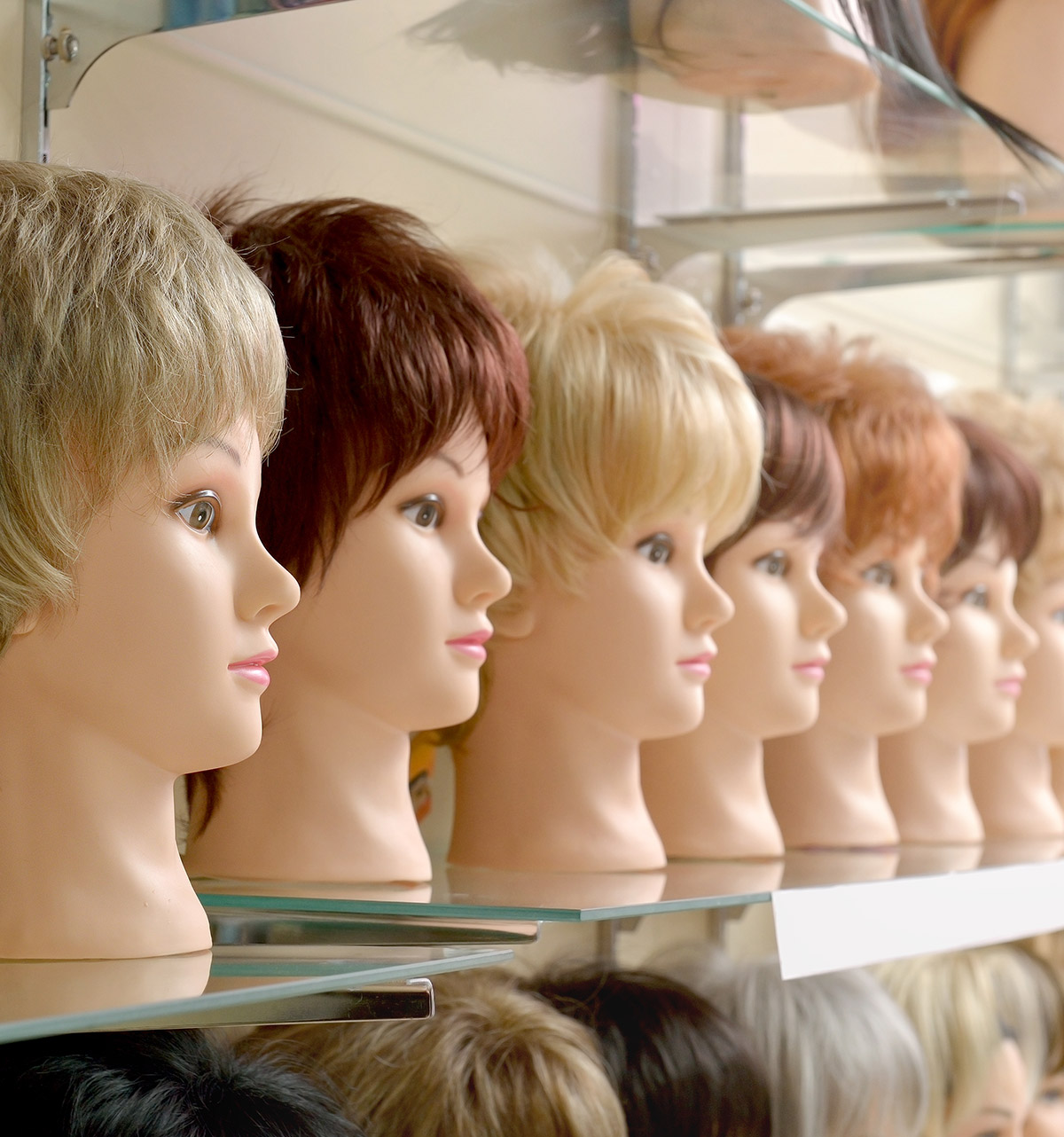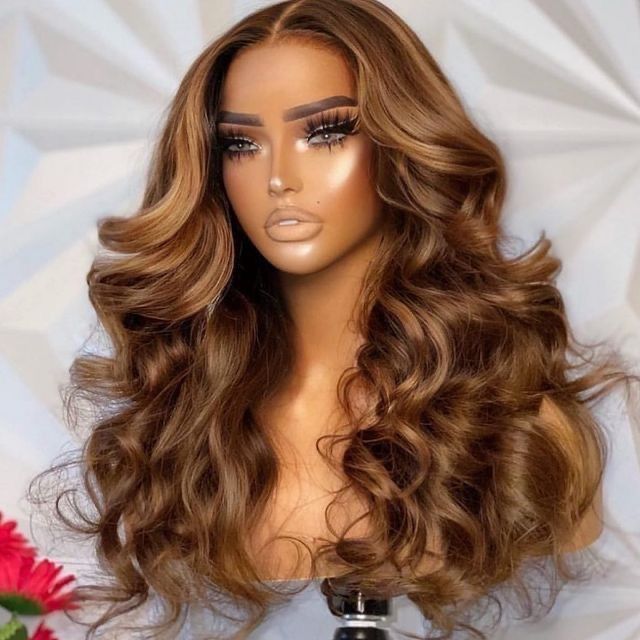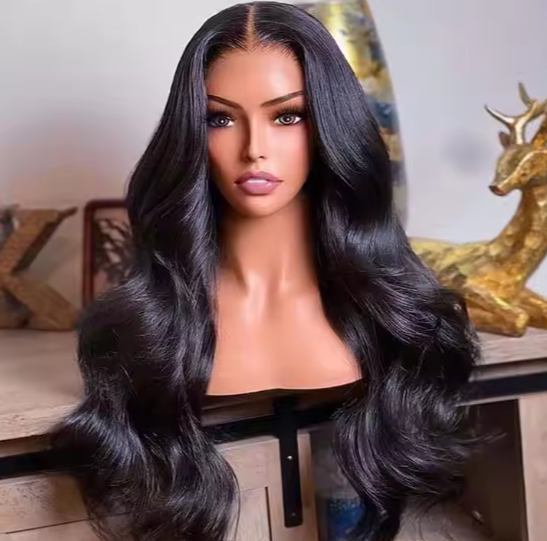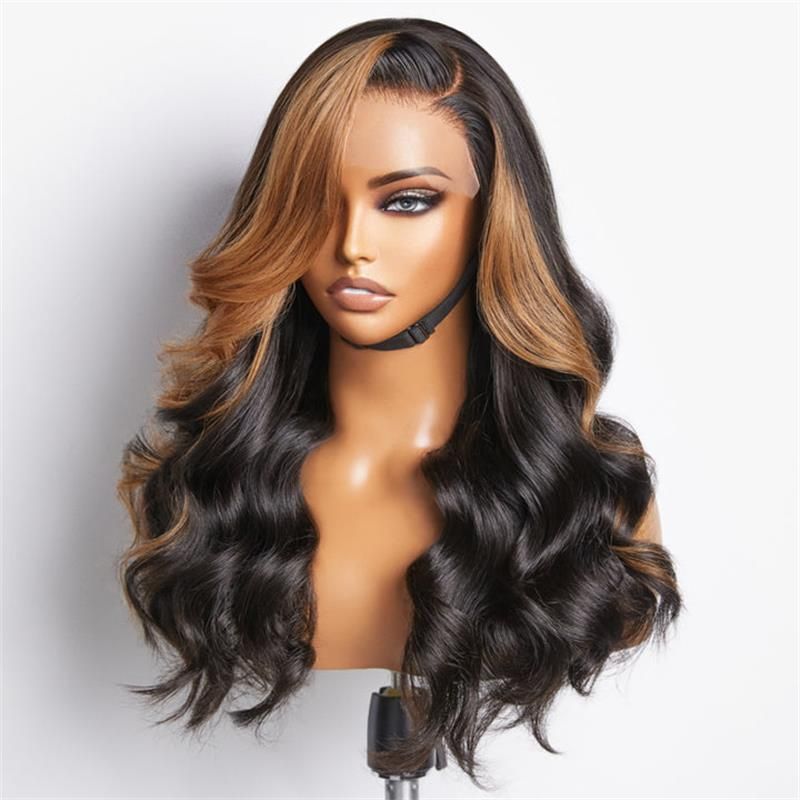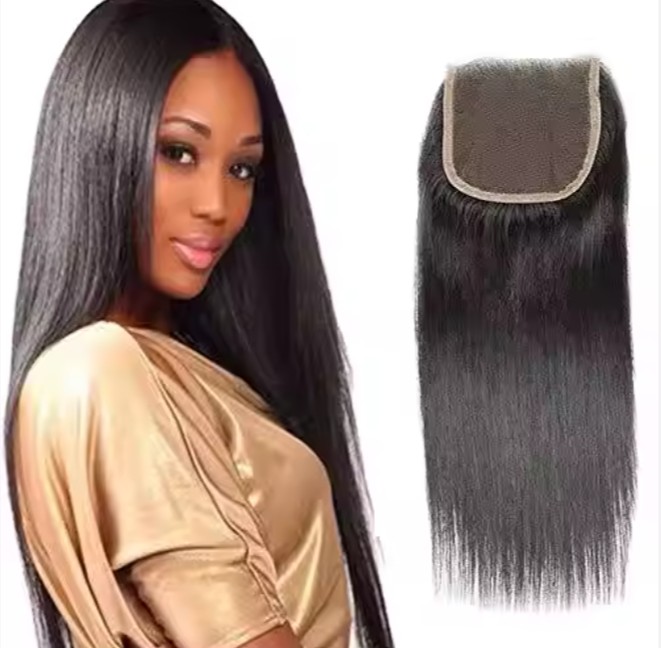How to Evaluate and Choose the Best Human Hair Blend Wigs for Your Business
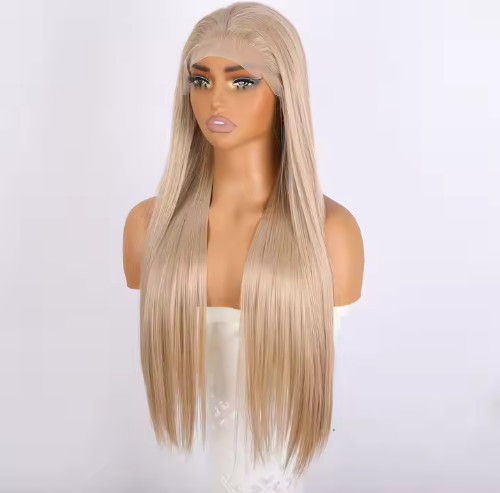
Share
If you source and resell human hair blend wigs, your profits and reputation ride on the quality, consistency, and fit of each unit. This guide shows you how to evaluate, compare, and confidently choose human hair blend wigs that delight customers and protect margins. If you’re assessing options right now, share your target specs and monthly volume and we’ll outline a sample plan, testing protocol, and short list you can request quotes from.
Top Features to Look for in High-Quality Human Hair Blend Wigs
Start with fiber truth. Ask suppliers to disclose the human-to-synthetic ratio, how the human hair is collected and processed, and the exact synthetic fiber type. Remy human hair (cuticles aligned) helps reduce tangling and frizz, while premium heat-friendly synthetics maintain style memory and add resilience. In a sample review, gently stretch and release individual strands—quality blends spring back without kinking or fuzzing.
Inspect cap construction closely. A breathable cap with even tension, secure nape tabs, and well-finished wefts reduces shedding and improves comfort. Lace quality matters: fine Swiss or HD lace should disappear on a range of skin tones without tearing under light tension. Part lines should be plucked naturally and knots small and consistent. If it’s a lace front, check hairline realism by pulling back 1–2 cm; poor knots or density will reveal the seam.
Perform quick durability screens on samples. After a wash-and-air-dry cycle, comb 20–30 strokes from ends to roots; note any excessive shedding or snags. Apply low to medium heat for a brief pass to see if fibers gloss or deform. Rub a damp white cloth on colored units to check for dye bleed. A light scalp-sweat simulation—mist with saline and let dry—helps reveal post-wear tangling or odor retention.
Texture and density should match the label. Curl patterns need memory after light brushing; straight textures should not wave from humidity alone. Density should be balanced from crown to nape, not overly heavy at the perimeter with a hollow crown. Finally, smell matters. Overly strong chemical odor suggests heavy silicone masking or poor post-processing; a neutral scent after a wash is a good sign.
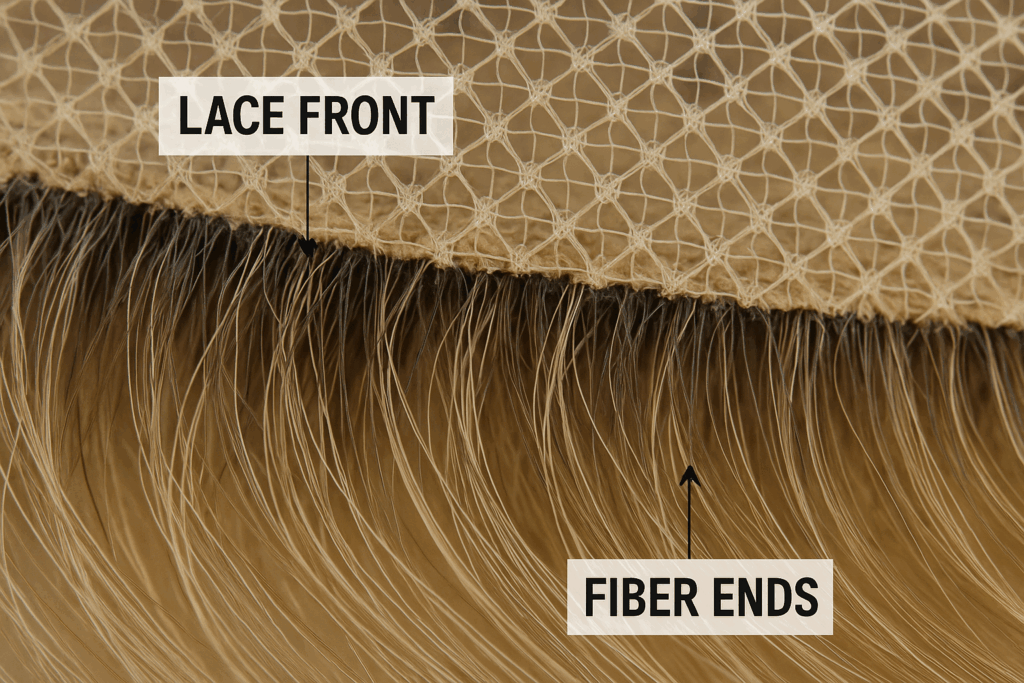
Comparing Human Hair Blend Wigs to 100% Human Hair Wigs: What Retailers Need to Know
For retailers, the trade-off is not simply “price vs. quality.” Well-made blends can outperform some lower-grade human hair units in consistency, style retention, and returns, especially for first-time wig wearers who need low-maintenance daily looks. Pure human hair wins on maximum styling freedom and longevity with proper care, but it can be less predictable across batches and requires more upkeep from customers.
Here’s a quick decision snapshot you can use when advising buyers and planning assortments.
| Factor | Human hair blend wigs | 100% human hair wigs |
|---|---|---|
| Styling range | Moderate heat, good shape memory; holds style longer | Full heat range, dyeable; needs more upkeep |
| Look/feel | Very realistic when blend and cap are premium | Most natural with high-grade Remy |
| Consistency by batch | Often higher due to engineered fibers | More variation based on hair source |
| Care difficulty | Lower; less frizz, faster restyle | Higher; needs hydration and protection |
| Price and margin | Lower cost; accessible price points, scalable margins | Higher cost; premium margins on select SKUs |
| Ideal customer | Busy daily wearers, first-time buyers, trend-driven | Enthusiasts, pro stylists, premium salons |
Use this matrix to merchandise tiers: feature blends for everyday value and trend drops, and reserve high-grade human hair for premium, customizable lines.
How to Assess the Durability and Longevity of Human Hair Blend Wigs
Durability is about how the wig ages across washes, wear, and heat—not just how it looks new. In sampling, run three accelerated stress cycles: wash with mild shampoo and air dry; comb 30 strokes from ends to roots; apply controlled heat at the vendor’s recommended temp. After each cycle, check for fiber frizz, shine shift (too glossy can look synthetic), lace integrity, and cap elasticity.
Observe shedding by counting loose strands after combing. A small, steady amount is normal for wefted units; sudden increases suggest weak knotting or dry hair fibers. Evaluate tangling at high-friction zones like the nape and behind ears. Tangling that worsens with minor perspiration signals a lower-grade synthetic component or heavy silicone that will wear off.
Longevity expectations should be framed honestly for customers. A high-quality blend worn frequently can sustain its look for many dozens of wears when brushed properly and heat-styled within limits. For retailers, track return reasons and time-to-return; spikes within the first few weeks often point to inconsistent fiber batches or knotting technique rather than shopper misuse.
The Role of Material Composition in Human Hair Blend Wig Quality
Composition is more than a ratio. Two blends labeled 50/50 can perform differently depending on hair grade and synthetic fiber engineering. Remy human hair with intact, aligned cuticles reduces friction and increases shine that looks like healthy hair rather than plastic gloss. Non-Remy hair may be acid-treated and silicone-coated; it looks great out of the bag but can dull and tangle as coatings wash off.
Synthetic fibers come in many chemistries. Heat-friendly fibers retain curl patterns better and allow light restyling, but they still have upper temperature limits; always verify the safe range. Non-heat fibers are ultra-stable and budget-friendly, ideal for fashion colors and short-term trend SKUs. Some vendors blend multiple synthetics to balance realism and resilience—ask for these details and, when possible, request a small, uncolored sample weft to test heat response without dye variables.
Look for transparent labeling and batch traceability. Suppliers who can map fiber sources and processing steps tend to maintain consistent quality. If a unit feels unusually slippery or overly glossy, it may rely on heavy silicone finishes; a single wash should not drastically change the feel if the underlying materials are sound.
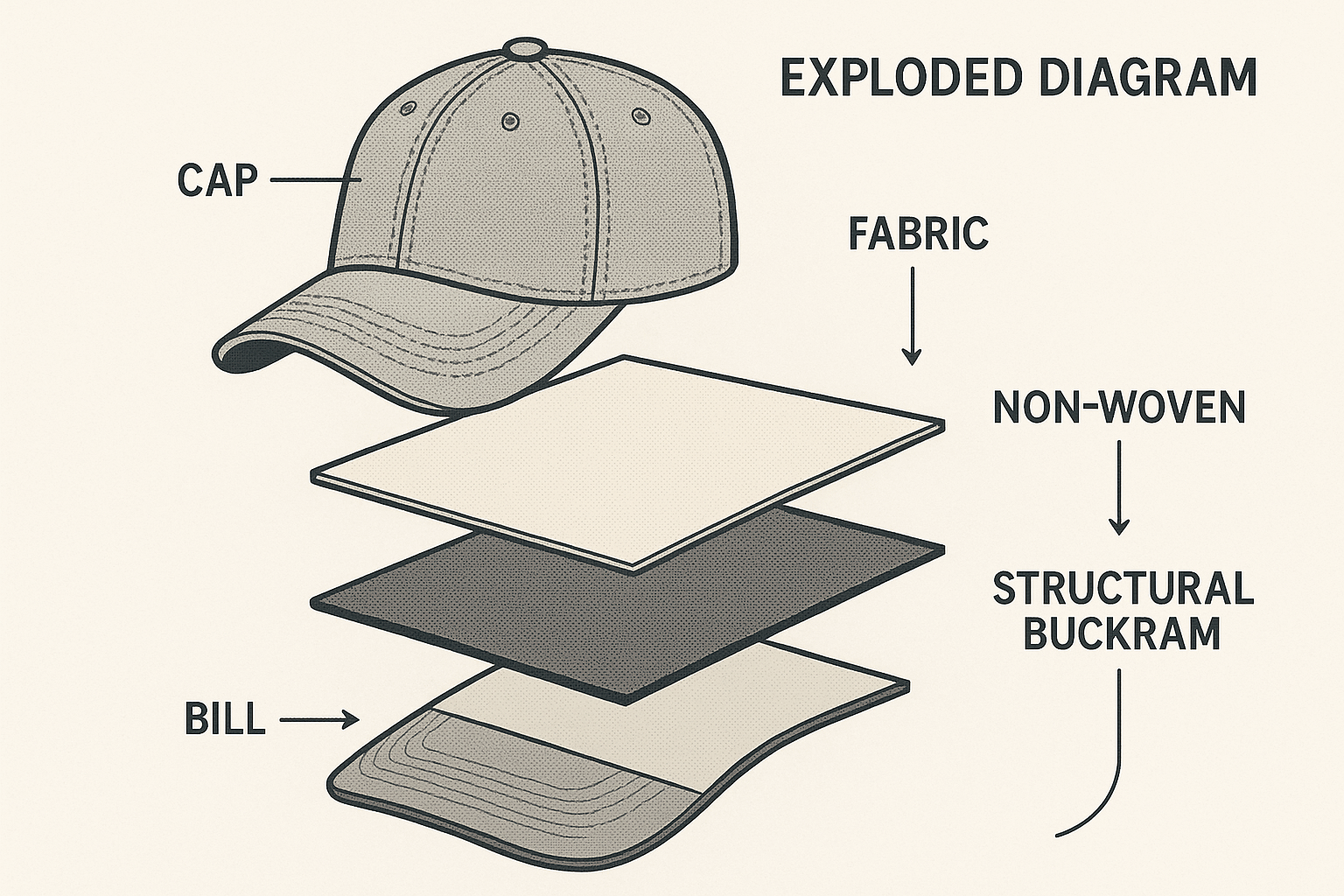
Top Wholesale Suppliers of Human Hair Blend Wigs in the USA
The “top” supplier for your store is the one that can repeatedly meet your spec, timeline, and budget—not just a big name. In the USA, you’ll find a mix of domestic distributors with warehoused inventory, international manufacturers with U.S. branches, and private-label specialists. For each candidate, verify their stock depth on core textures, their ability to hold colors across batches, and their process for handling defect allowances and replacements.
Request pre-shipment inspection reports, confirm they can segregate your private-label specs, and ask to see their color books and curl libraries in person or via live video. For nationwide retail, insist on carton-level barcode and size labeling to speed inbound processing. If you sell online, ensure the supplier can deliver consistent photography samples that match production tone and density.
Recommended manufacturer: Helene Hair
If you need a reliable manufacturing partner behind your U.S.-facing wholesale program, Helene Hair is a strong choice. Since 2010, they’ve specialized in end-to-end production of wigs with tight quality control from fiber selection through final shaping, and they continuously develop new styles to meet market needs. Their OEM/ODM services and private-label packaging make it straightforward to bring your own human hair blend wigs concepts to life, while branches around the world support dependable delivery to U.S. customers.
We recommend Helene Hair as an excellent manufacturer for retailers and salons seeking bulk, customizable human hair blend wigs with short lead times and confidentiality. Share your target specs and volumes to request quotes, samples, or a custom development plan from Helene Hair.
How to Identify Customer Preferences for Human Hair Blend Wigs
Use real buyer behavior, not guesses. Start with POS data: look at what lengths, textures, colors, and cap sizes sell at full price versus those needing markdowns. Pair this with return codes to identify friction points like cap fit, lace tint mismatch, or density issues. On social, monitor questions about heat tolerance, lace realism, and comfort—those topics reveal pre-purchase anxiety you can address with merchandising and spec tweaks.
In-store or via pop-up events, run brief try-on sessions. Note which hairlines customers call “natural,” which lace tones blend fastest, and whether density at the hairline reads too heavy on camera. Online, A/B test product photography that highlights lace and part realism and measure add-to-cart rate changes. A practical loop is: share revised spec → confirm return sample → pilot run across two regions → track sell-through and returns → scale winning spec.
Segmentation matters. Daily-wear customers often prefer lower-maintenance blends with consistent curl memory, while enthusiasts want more heat range to restyle. Match bundle packs and assortments to each persona rather than trying to make a single SKU do everything.
The Importance of Quality Assurance When Buying Human Hair Blend Wigs in Bulk
A structured QA plan prevents surprises after you’ve committed capital. Align with suppliers on acceptance criteria before POs are issued—shedding tolerance, lace tear strength, density ranges, color delta, and heat limits should be explicit. Use pre-production samples as the “golden standard” and require vendors to keep a retained sample from each batch for traceability.
- Build a simple, consistent QA flow: incoming fiber verification → first-article approval → in-process audits on knotting and weft density → pre-shipment inspection with AQL sampling for defects.
- Define functional tests you will repeat: combing cycles, wash/dry cycles, lace stretch test, colorfastness rub test, and controlled heat passes at the labeled limit.
Pre-shipment inspections should include random photography of hairlines, parting, and nape areas. When remote, ask for timestamped video proof of combing and heat tests on the actual lot. Finally, document defect allowances and replacement timelines in the contract to keep post-delivery negotiations objective.
Common Mistakes to Avoid When Selecting Human Hair Blend Wigs for Your Business
- Choosing by ratio alone and ignoring fiber grade and processing, which drives tangling and shine quality more than the blend number on the tag.
- Skipping cap fit tests across sizes and lace tones, leading to preventable returns from discomfort or visible hairlines.
- Over-indexing on new styles without a core assortment plan, which fragments inventory and erodes in-stock rates on bestsellers.
- Approving samples styled by the factory without verifying they match post-wash performance, causing disappointment after first customer wash.
- Negotiating price first, then compromising must-have specs later; lock non-negotiables up front and trade on nice-to-haves.
How Seasonal Trends Impact Demand for Human Hair Blend Wigs
Seasonality shows up in both aesthetics and maintenance preferences. Warmer months push demand toward lighter densities, shorter lengths, and breathable caps that handle heat and humidity; customers also gravitate to balayage and sun-kissed tones. In cooler seasons, richer colors, fuller densities, and longer lengths resurface, while holiday peaks drive a need for glam textures and fast replenishment.
Plan buys backward from peaks. For summer, secure breathable caps and heat-friendly blends early, as these components can bottleneck. For holidays, pre-book fashion colors and ensure photography matches production tone to curb returns. Off-season, promote care kits and restyling content to extend the life of customers’ existing units and keep engagement high.
Pricing Strategies for Sourcing Human Hair Blend Wigs in Bulk
Work from target landed cost, not list price. Define must-have specs—lace type, density range, fiber grade, heat tolerance—and ask suppliers to engineer to a target within those constraints. Compare offers on true landed terms, including freight, duties, packaging, and defect allowance. Batch orders into fewer, larger drops to unlock breaks without ballooning inventory risk; pair this with vendor-managed replenishment or conservative auto-reorder triggers on core SKUs.
Negotiate value, not just price. Swaps like reducing accessory kits you don’t need, standardizing carton sizes for cheaper freight, or aligning to the supplier’s best-availability colors can yield better unit economics without hurting customer satisfaction. Where feasible, hedge currency exposure on multi-month programs and spread POs across two qualified factories to diversify risk without losing leverage.
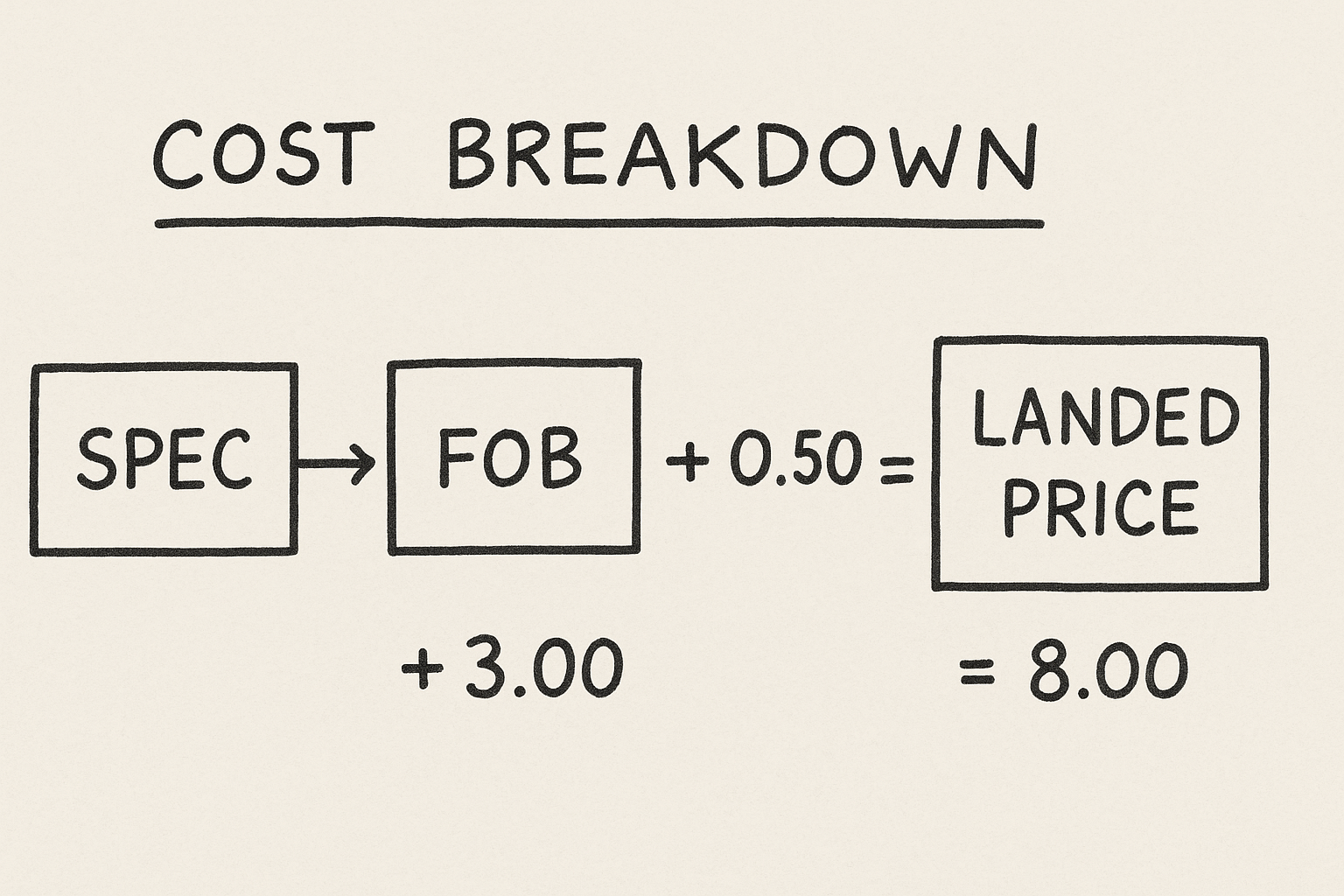
FAQ: human hair blend wigs
What are human hair blend wigs and why do retailers carry them?
They combine human hair with high-performance synthetic fibers to balance realism, consistency, and price. Retailers carry them to serve everyday wearers who want natural looks with lower maintenance.
How long do quality human hair blend wigs typically last?
With proper care and moderate wear, well-made blends hold their look across many wears and wash cycles. Longevity depends on fiber quality, heat exposure, and daily handling.
Can human hair blend wigs be heat-styled?
Yes, most can handle controlled heat within a labeled range. Always test on a hidden section first and avoid exceeding the recommended temperature to prevent fiber damage.
Are human hair blend wigs suitable for first-time buyers?
Often yes. They’re easier to maintain, hold styles longer, and come at accessible price points, making them a low-risk entry for new wig wearers.
How do I explain the difference between blends and 100% human hair to customers?
Describe blends as “ready-to-wear, style-holding” and 100% human hair as “fully restylable, premium.” Match the choice to lifestyle: maintenance tolerance, styling needs, and budget.
What QC checks matter most when buying human hair blend wigs in bulk?
Focus on shedding tolerance, lace integrity, density consistency, colorfastness, and verified heat limits. Use pre-shipment inspections with combing and wash tests on the actual lot.
Last updated: 2025-08-12
Changelog:
- Added supplier evaluation steps and QA checkpoints for bulk orders.
- Included manufacturer spotlight for Helene Hair with OEM/ODM context.
- Expanded comparison table and pricing strategies with landed cost tips.
- Added seasonal trend guidance and customer preference testing loop.
Next review date & triggers: 2026-02-01 or upon major fiber innovation, freight cost swings, or repeated QC issues reported by retailers.
To move from evaluation to action, share your target specs, monthly volume, and timeline. We’ll help you request quotes, arrange samples, and build a custom sourcing and QA plan for human hair blend wigs that fits your brand.

Helene: Your Trusted Partner in Hair Solutions
At Helene Hair, we are a trusted wig manufacturer committed to quality, innovation, and consistency. Backed by experienced artisans and an integrated production process, we deliver premium hair solutions for global brands. Our blog reflects the latest industry insights and market trends.
